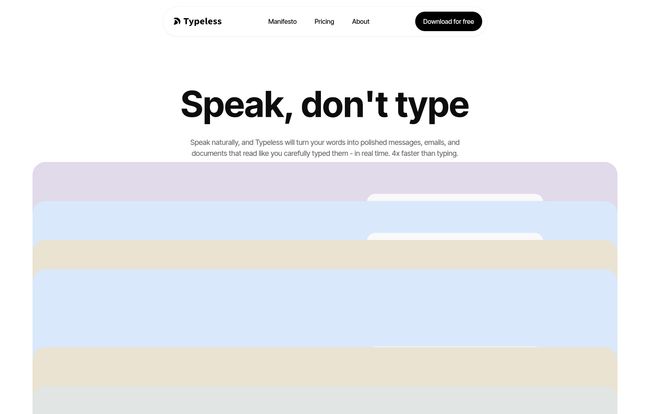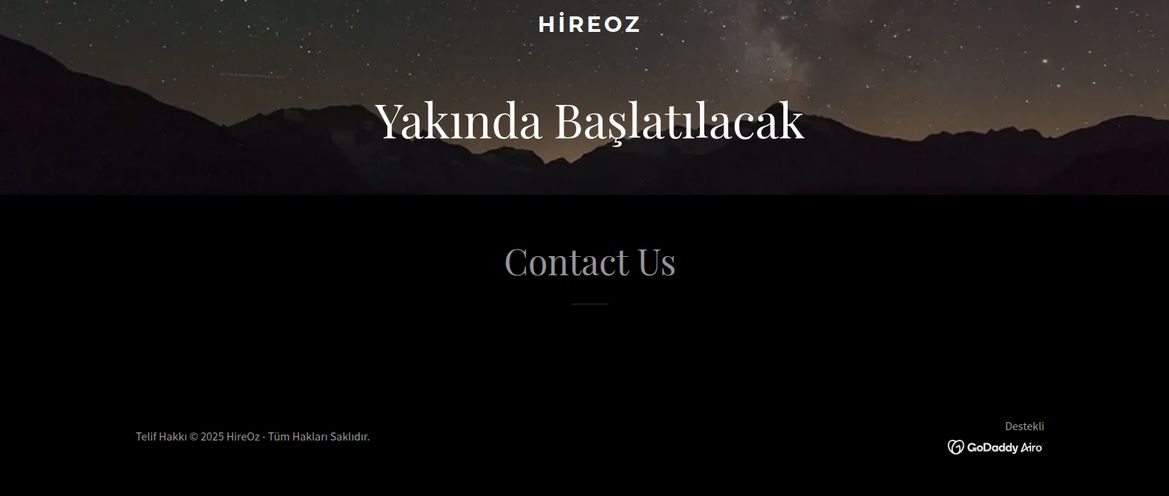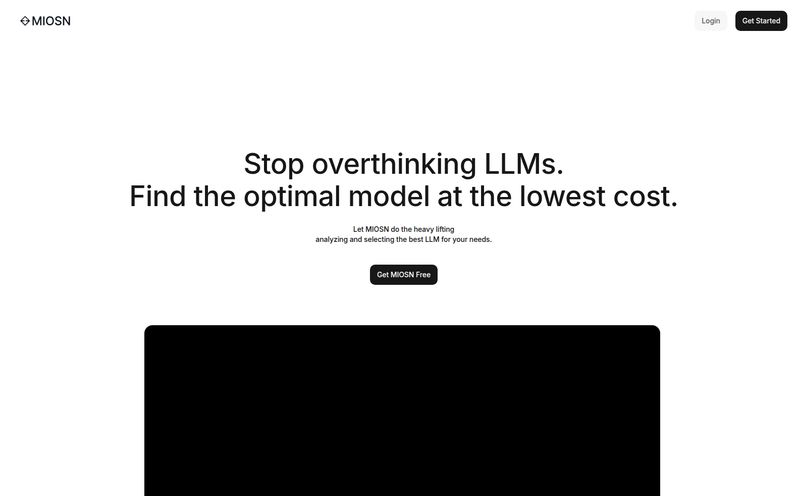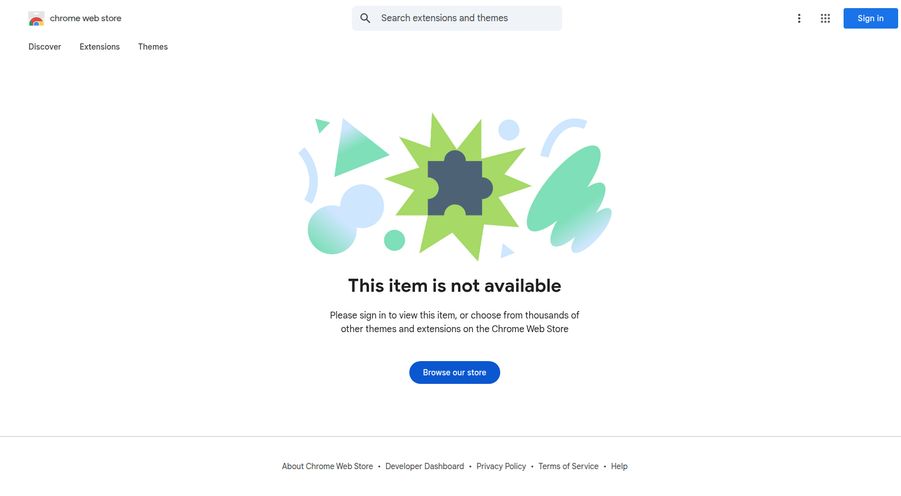We’ve all been there. You’re in the zone, ideas are flowing like a river, and your fingers are desperately trying to keep up on the keyboard. It’s a frantic tap-tap-tapping, a race against your own brain. And most of the time? The brain wins. The fingers lag behind. For years, I’ve dreamed of a world where I could just… speak my content into existence. Voice-to-text has been the holy grail, always promised but often delivering a garbled mess that required more editing than if I'd just typed it myself.
We’ve had Siri, Google Assistant, and Dragon NaturallySpeaking for ages. They’re… okay. But they never quite felt natural, did they? They always felt like you were dictating to a machine.
Then I stumbled upon a tool with a bold claim: “Speak, don’t type.” The tool is called Typeless, and its whole mantra is “Your voice is the new keyboard.” As a professional blogger who probably types more words in a day than most people speak, you can bet I was intrigued. Skeptical, but intrigued.
So, What Exactly is Typeless?
At its core, Typeless is a deceptively simple app. You talk, it types. But where it aims to be different is in its polish and intelligence. It’s designed to turn your natural speech—pauses, ums, and all—into clean, well-punctuated text that reads as if you meticulously crafted it. It's not just for short messages; it's positioned for emails, documents, and yes, even entire blog posts.
Think about it. The average person speaks at about 150 words per minute, but types around 40 wpm. Even for a seasoned typist like me who clocks in higher, there's a clear mismatch. Typeless claims it can get you to 220 wpm. That's not just closing the gap; that's blowing past it.
The Speed Test: Can It Really Outpace a Keyboard?
The first thing that grabbed my attention on their site was a stark comparison: a standard keyboard chugging along at 45 wpm versus Typeless blazing at 220 wpm. That’s a bold claim. So, of course, I had to see for myself.

Visit BlackMythWukong.chat
After installing it on my Mac (more on platform availability later), I started talking. And I’ve got to admit, it’s fast. Frighteningly fast. There’s a strange sort of magic to seeing your words appear on the screen almost instantaneously, formatted correctly with commas and periods you didn’t even explicitly state. It’s less like dictation and more like having a stenographer who can read your mind. Now, is everyone going to hit 220 wpm? Probably not. Your speed depends on how fast you can clearly articulate your thoughts. But the potential to dramatically accelerate your workflow is definitely there.
The Features That Genuinely Impressed Me
An app can be fast, but if it’s a pain to use, it’ll just gather digital dust. Typeless has a few standout features that show they’ve really thought about the user experience.
The Personal Dictionary: A Lifesaver for Niche Industries
This, for me, is the killer feature. As an SEO guy, I’m constantly typing things like “SERP,” “E-E-A-T,” or client names that spellcheckers absolutely despise. Typeless Pro lets you add unique words to a personal dictionary. So when I say “Vektor” or “Mackey,” it knows exactly what I mean. This is a huge deal for us nerds who deal with niche jargon, brand names or weird acronyms. You teach it once, and it never gets it wrong again. This alone almost justifies the Pro plan.
Privacy That Doesn’t Feel Like an Afterthought
In a world where every free tool seems to be training its AI on your data, Typeless takes a hard-line stance on privacy. Zero data retention. No training on your data. Disabled history control. This is a massive plus. It means my half-baked article ideas, confidential client notes, and rambling thoughts aren’t being fed into some corporate algorithm. It feels like my words are my own, which is, frankly, how it should be. A big tip of the hat to them for this.
Platform Support and Languages
It supports over 100 languages, which is fantastic for global teams or multilingual users. The big catch right now, however, is that it’s only available for macOS. According to their site, Windows and mobile (Android) versions are “coming soon.” This is probably the biggest drawback at the moment, as it leaves a huge chunk of the market waiting on the sidelines.
Breaking Down The Typeless Pricing Plans
Okay, let’s talk money. Typeless offers a pretty straightforward two-tier system, which I appreciate. No confusing add-ons or hidden fees.
- The Free Plan: This is a genuinely useful free offering. You get up to 2,000 words per week, which is more than enough to handle your daily emails and a few short documents. It’s the perfect way to see if the workflow clicks for you without spending a dime. You get the full speed and the 100+ language support.
- The Pro Plan: This is where the power users will land. For $12 per month (billed annually at $144), you get everything in the Free plan plus some critical upgrades. The word limit becomes unlimited, which is a must for writers or anyone using it extensively. You also unlock that all-important Personal Dictionary and get early access to new features.
Is the Pro plan worth it? If you’re a professional writer, a manager who dictates a lot of memos, or someone who simply values speed and efficiency, I’d say yes. The time saved and the reduction in typing-related strain could easily pay for the subscription.
My Honest Take: The Good, The Bad, and The ‘Coming Soon’
No tool is perfect, right? After spending some time with Typeless, I have a pretty clear picture of its strengths and weaknesses.
The good is obvious: incredible speed, impressive accuracy, and a rock-solid privacy policy. The interface is clean and stays out of your way. The personal dictionary is a game changer.
The bad is really just one big thing: its current Mac-only status. I have a lot of friends and colleagues on Windows who would love this, but for now, they're out of luck. It feels a bit like an exclusive club at the moment.
The 'coming soon' is where the excitement lies. Once Typeless lands on Windows and mobile, it could legitimately change how millions of people interact with their devices. Imagine seamlessly dictating an email on your desktop, then switching to your phone to voice-reply to a text using the same powerful engine. That’s the future Typeless is building toward.
So, Who is Typeless ACTUALLY For?
I see a few groups of people who would immediately fall in love with this tool:
- Content Creators & Bloggers: Get that first draft down at the speed of thought. It's brilliant for brainstorming and outlining.
- Executives and Managers: Clear your inbox by speaking your replies instead of typing them. It's a massive time-saver.
- Students: Taking lecture notes would be a breeze. You could capture everything the professor says, verbatim.
- Anyone with Accessibility Needs: For people with RSI, carpal tunnel, or other physical conditions that make typing difficult or painful, Typeless isn’t just a convenience; it's a necessity.
Is It Time to Throw Away Your Keyboard?
So, back to the big question. Is Typeless the keyboard killer we've been waiting for? My verdict: almost. For raw text entry and getting ideas out of your head and onto the page, it’s phenomenal. It dramatically reduces the friction between thought and text. However, for tasks that require a lot of precise editing, coding, or navigating complex spreadsheets, the keyboard and mouse still reign supreme.
But maybe that's the wrong way to look at it. Typeless isn’t trying to replace your keyboard for every task. It’s about freeing you from it when you need to think and write freely. It’s an incredible tool for the first 90% of the writing process, and for that, it’s earned a permanent spot in my workflow. My fingers are already thanking me.
Frequently Asked Questions
- Is there a free version of Typeless?
- Yes! There's a great free plan that gives you 2,000 words per week, which is perfect for trying it out and for light daily use.
- How much is the Typeless Pro plan?
- The Pro plan costs $12 per month, but it's billed annually, so the total upfront cost is $144 for the year. This gives you unlimited words and the personal dictionary feature.
- Does Typeless work on a Windows PC?
- Not at the moment. Currently, Typeless is only available for macOS. However, they have stated that a Windows version is 'coming soon'.
- Is my data safe and private with Typeless?
- Yes. This is one of their biggest strengths. Typeless has a zero data retention policy, meaning they don't store your dictations, and they don't use your data to train their AI models.
- Can I teach Typeless custom words or acronyms?
- You sure can! That's what the 'Personal Dictionary' feature is for, and it's available on the Pro plan. It's perfect for industry jargon, specific names, or any unique words you use often.



